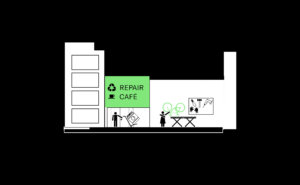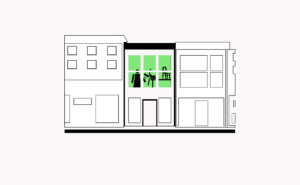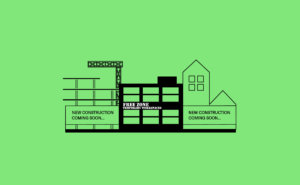
R.9 Assured Security of Space
Businesses require reliable long term access to their manufacturing space in order to make investment in staff, technology and local networks.
[Context] Manufacturers, once installed on a site, can create deep and complex interdependencies with clients, suppliers and neighbouring businesses. Businesses that are under threat to move will be hesitant to develop or nurture these relationships and invest in equipment. Assured security of space is a strong indicator from public authorities or land owners that businesses can build in long-term relationships, making confident investment in technology and creating interdependencies which may give rise to shared equipment, personnel, resources and knowledge.
[Problem] There are many issues that will make a business doubt their future access to a site or space. Real estate prices are one of the biggest threats for cities suffering from land scarcity. Rezoning industrial land into housing, offices, parks and public infrastructure threatens businesses’ long-term planning and capacity for growth. Even if a business owns their site, having residential neighbours can create other threats due to noise, dust, deliveries, reduction of accessibility by trucks (such as expanding footpaths for pedestrians or cyclists), low emissions zones and environmental projects such as water management or ecosystem networks. Gentrification also means fewer alternative spaces for the business to move to in case the it wants to upgrade or downsize (see C.5 Varying Unit Sizes). This also leads to knock-on effects with suppliers. Furthermore, the result of increasing rental prices for housing or commercial space in larger urban centres has consequences for industrial land too, which increases either rental prices or taxation. It could force businesses to increase the price of their products to retain profitability, which can make a company uncompetitive.
[Forces] Urban planning policies intended to regenerate neighbourhoods and improve environmental conditions can have serious unintended consequences for manufacturers if not carefully managed. As a result, some cities have started developing policies for industrial intensification or co-location, such as C.1 Microzoning to protect or compensate the loss of manufacturing land. This can also have further unintended consequences by reducing the amount of contiguous space available to a single business (often co-located spaces are small, such as 100-1000m2) and by introducing residential neighbours that are easily disturbed by noise, pollution or messy streetscapes. Such conditions can be suitable for only a very limited range of manufacturers. Secondly, as industrial areas were once focused on production, they lack both public space and spaces for water and nature. Efforts to deal with both have found industrial land as an easy target to increase quotas or implement master plans. In practice more rigorous and inclusive C.2 Negotiated Qualities & Environmental Criteria can be biased against manufacturers. Furthermore, improvements in public space design, N.8 Quality Urban Environment in Making Areas, to improve footpath space or reduce road carriage space in older established mixed use neighbourhoods can impact businesses that depended on public road carriages for deliveries or where corners are so tight that truck turning circles are hampered. Finally efforts to reduce pollution or carbon emissions through low emissions mobility zones, toll zones and reductions of particulate matter emissions (R.8 Moving Things Efficiently and C.6 Strategic Access to Multimodal Mobility) may be enough to bankrupt manufacturers.
[Solutions] Build on three particular approaches for assuring space – through urban planning, finance and community management. Firstly, simple planning principles can limit conflicts by N.1 Taking Advantage of Place Conditions, C.9 Concentrating Messy Making Along Infrastructure and ensuring N.9 Making Touches Making and C.6 Strategic Access to Mobility Infrastructure to allow access by heavy transport. This can be complemented by solutions for R.8 Moving Things Efficiently or investing in a N.6 Centralised Logistics Zone. For sites that no longer attract larger industrial activities, it shouldn’t be simply assumed that there is no demand for space. C.1 Microzoning may be able to offer an alternative type of space that is more accessible to smaller manufacturers. Secondly, R.10 Place-based Financial Levers could be applied to manage rental prices or taxation. Avoid available industrial land to be used by activities that can afford to be located in commercial areas (such as offices or retail). If policy is developed to reduce emissions, compensation should be required for manufacturers to invest in new equipment. Public actors can show assurances by investing in industrial areas to provide a C.3 Balance Between Public & Private Land, build P.2 Shared Making Spaces & Technology and offer C.4 Diverse Tenure Models to correct market imbalances. Finally, manufacturers should define clear needs and dedicate energy to negotiate with planning authorities while developing positive relationships with neighbours in residential areas (see R.3 Curator).
[Contribution] Add contributions here.







